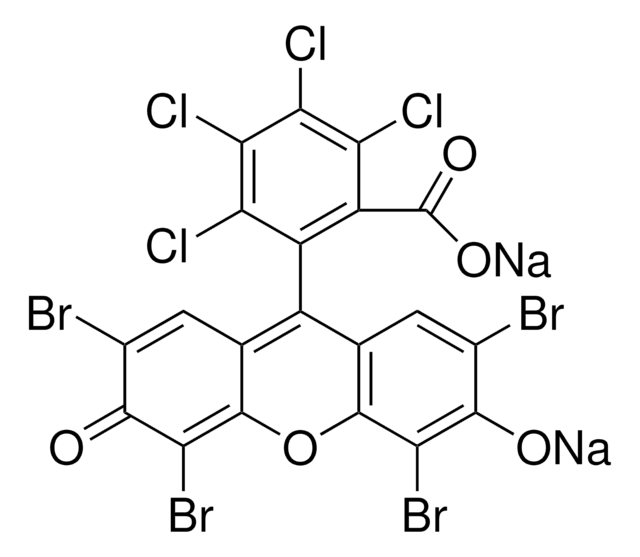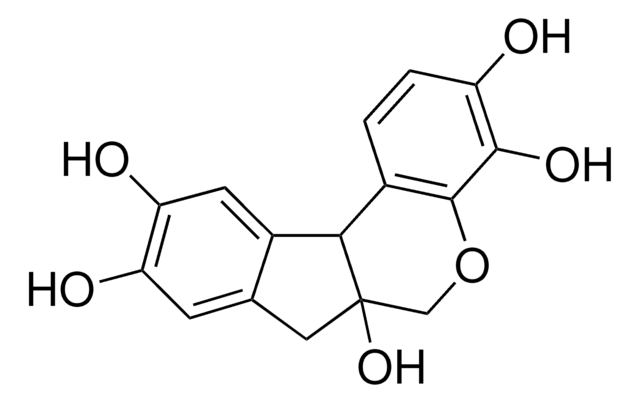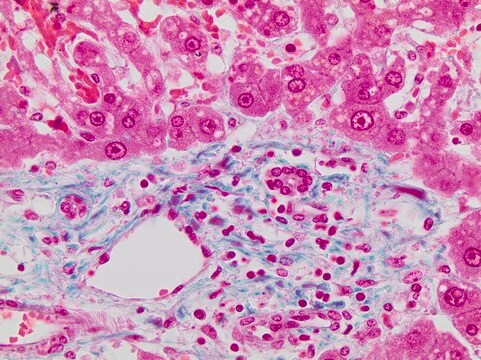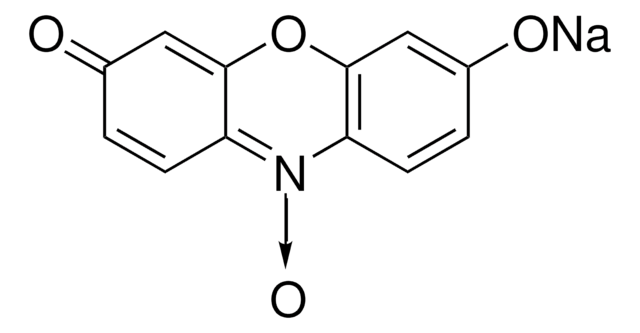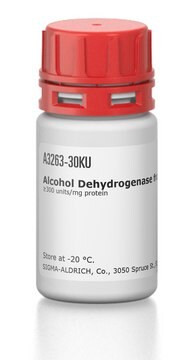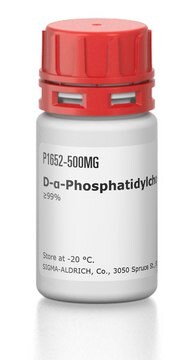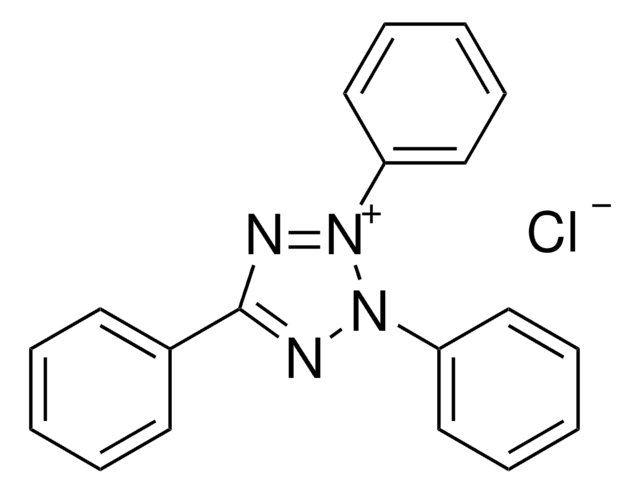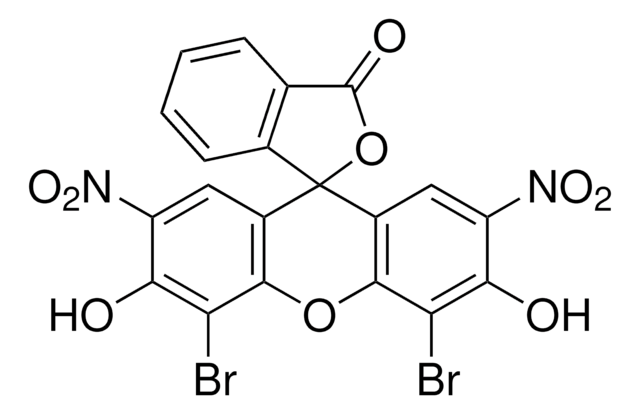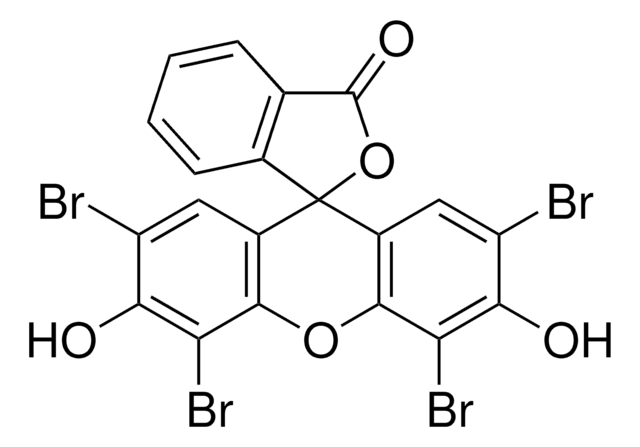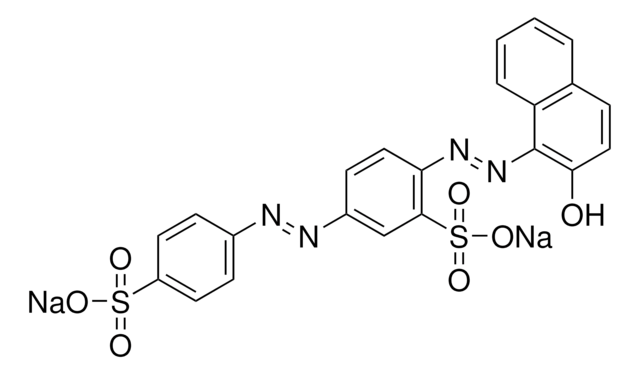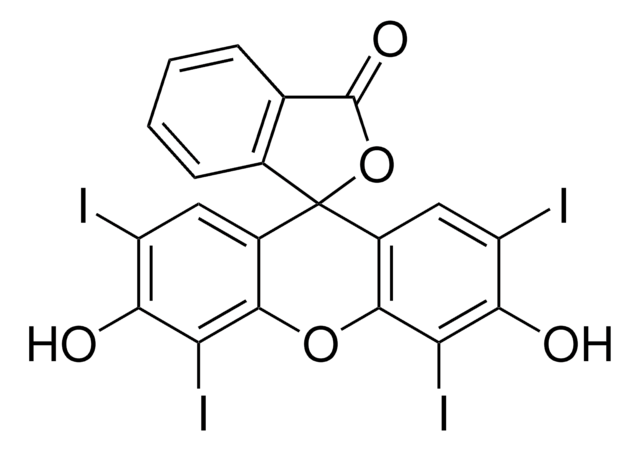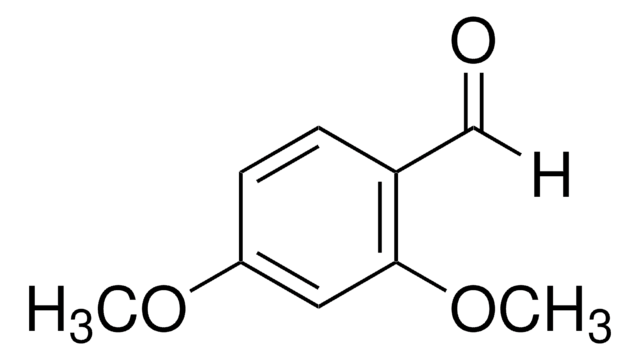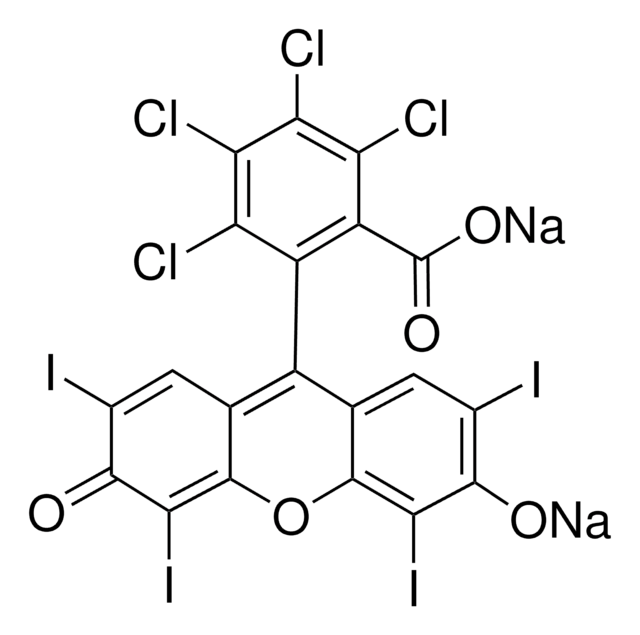P4030
Phloxine B
Dye content, ≥80%, certified by the Biological Stain Commission, powder
Synonyme(s) :
2′,4′,5′,7′-Tetrabromo-4,5,6,7-tetrachlorofluorescein disodium salt, Acid Red 92, Cyanosine, D&C;Red No. 28, Eosin 10B
About This Item
Produits recommandés
Nom du produit
Phloxine B, Dye content ≥80 %, certified by the Biological Stain Commission
Qualité
certified by the Biological Stain Commission
Niveau de qualité
Forme
powder
Composition
Dye content, ≥80%
Technique(s)
microbe id | staining: suitable
Couleur
dark red
Solubilité
H2O: 1 mg/mL
εmax
1150-1300 at 546-550 nm
Application(s)
diagnostic assay manufacturing
hematology
histology
Température de stockage
room temp
Chaîne SMILES
[Na+].[Na+].[O-]c1c(Br)cc2c(Oc3c(Br)c([O-])c(Br)cc3C24OC(=O)c5c(Cl)c(Cl)c(Cl)c(Cl)c45)c1Br
InChI
1S/C20H4Br4Cl4O5.2Na/c21-5-1-3-17(9(23)15(5)29)32-18-4(2-6(22)16(30)10(18)24)20(3)8-7(19(31)33-20)11(25)13(27)14(28)12(8)26;;/h1-2,29-30H;;/q;2*+1/p-2
Clé InChI
OOYIOIOOWUGAHD-UHFFFAOYSA-L
Vous recherchez des produits similaires ? Visite Guide de comparaison des produits
Description générale
Application
Adéquation
Code de la classe de stockage
11 - Combustible Solids
Classe de danger pour l'eau (WGK)
WGK 2
Point d'éclair (°F)
Not applicable
Point d'éclair (°C)
Not applicable
Équipement de protection individuelle
Eyeshields, Gloves, type N95 (US)
Faites votre choix parmi les versions les plus récentes :
Déjà en possession de ce produit ?
Retrouvez la documentation relative aux produits que vous avez récemment achetés dans la Bibliothèque de documents.
Les clients ont également consulté
Protocoles
Separation of Tartrazine; Amaranth; Indigo carmine; New Coccine; Sunset Yellow FCF; Allura Red AC; Fast Green FCF; Erioglaucine disodium salt; Erythrosin B sodium salt; Phloxine B; Rose bengal
Notre équipe de scientifiques dispose d'une expérience dans tous les secteurs de la recherche, notamment en sciences de la vie, science des matériaux, synthèse chimique, chromatographie, analyse et dans de nombreux autres domaines..
Contacter notre Service technique